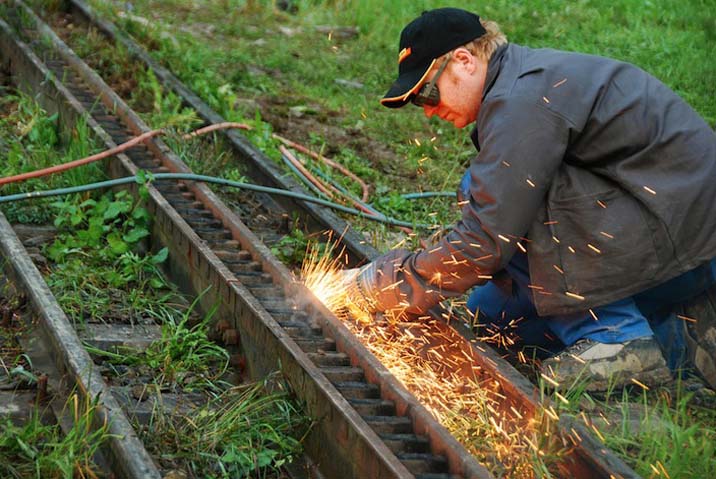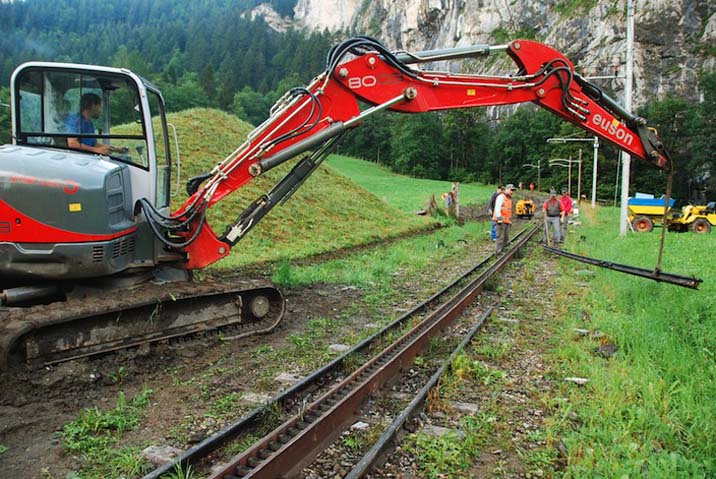
Witimatte Switzerland - No one speaks of the bad planning of 1893.
But the fact is that a 1.9 kilometer stretch of the Wengernalpbahn had only 17 years of use.
An unusually short time for a railway line.
The first planners had chosen the shortest possible path between Witimatte and Wengen with a slope of 25 percent.
After railway construction Wengen slowly became more attractive for winter guests, and in addition, with the Jungfrau Bahn advancing towards the Jungfraujoch, more operation was expected.
The direct route was vulnerable to ice and rockfall.
So the railway builders built a little further to the north and constructed a loop tunnel in the Wengwald.
By 1910 the new line was ready for operation.
But the old line remained.
For rail passengers the most visible part of the old line is at Witimatte, where it continued up towards the woods, while the new line, approximately 1.2 kilometre long, turned north.
A pretty keeper's house (wärterhaus) testifies that earlier the old line was monitored.
Demolition in View of the Camera
The directorate of WAB decided, after nearly 100 years, two route options were not necessary, and since the rarely used old track had degraded, demolition was necessary.
Also, the maintenance for continuing operation of the old line was too expensive.
The demolition caused a stir in the railways of Switzerland, even Swiss television was there to document the event.
Meanwhile, the expensive 600,000 franc demolition is well advanced.
"We mainly use our own employees to make this happen," said Jürg Lauper, Head of Infrastructure for the Jungfrau Railways.
The rack sections Swiss mechanical engineer Niklaus Riggenbach patented in 1863 are designed for a long service life.
The demolition of the route not only requires good logistics, but also manual labour.
Rails must be separated with a cutting torch, nuts and bolts are removed with a suitable device, and collected manually.
All fittings on the track have degraded.
Some of the track was once used on the Schynige Platte Bahn.
The resulting scrap metal, there is around 250 tons, is recycled.
Around a hundred wooden and steel poles are also broken down.

Track Disposal
The track superstructure was dismantled from top to bottom, and the removal of the rails was carried out along the right-of-way.
Whole sections or individual rails were moved by excavator onto a freight train.
The right-of-way in the forest has been left to nature which has already partly obliterated it.
The difference is at Witimatte where the line was covered with sod from Grindelwald.
The catenary power poles were brought down into the valley with a large forest vehicle along the trackless right-of-way.
Anonymous Author.


